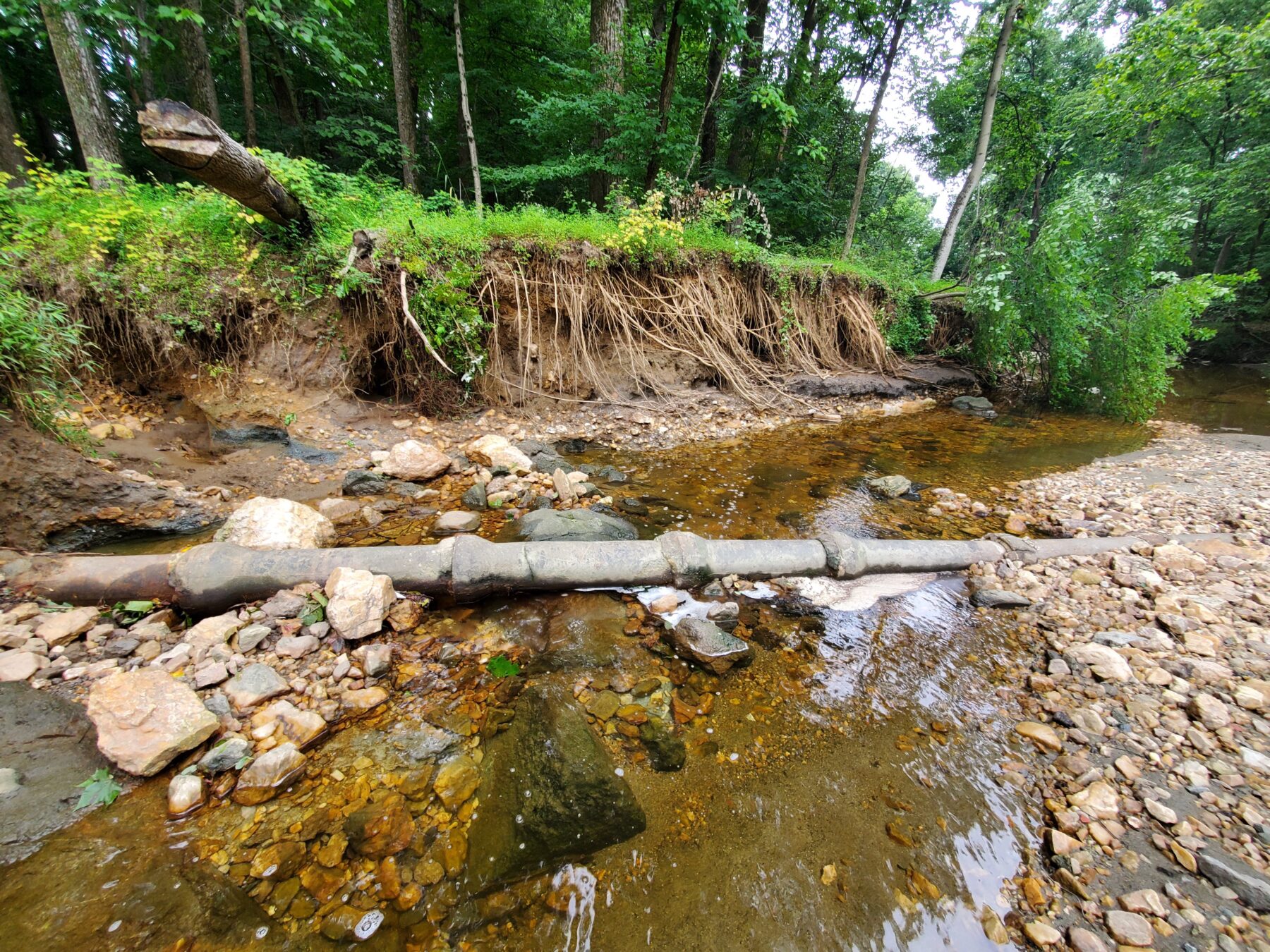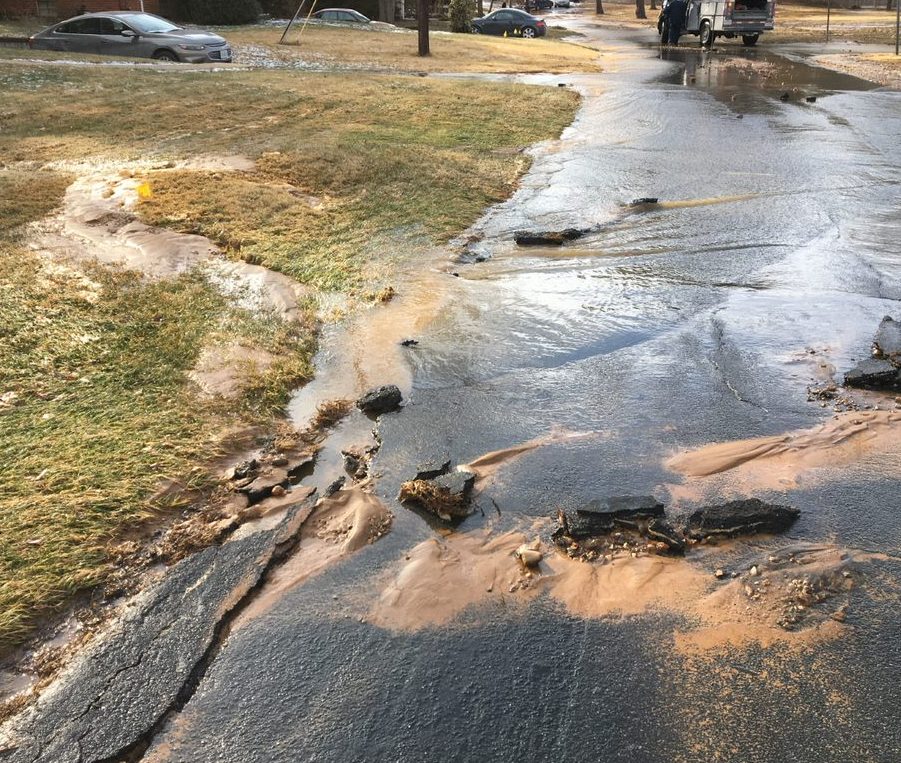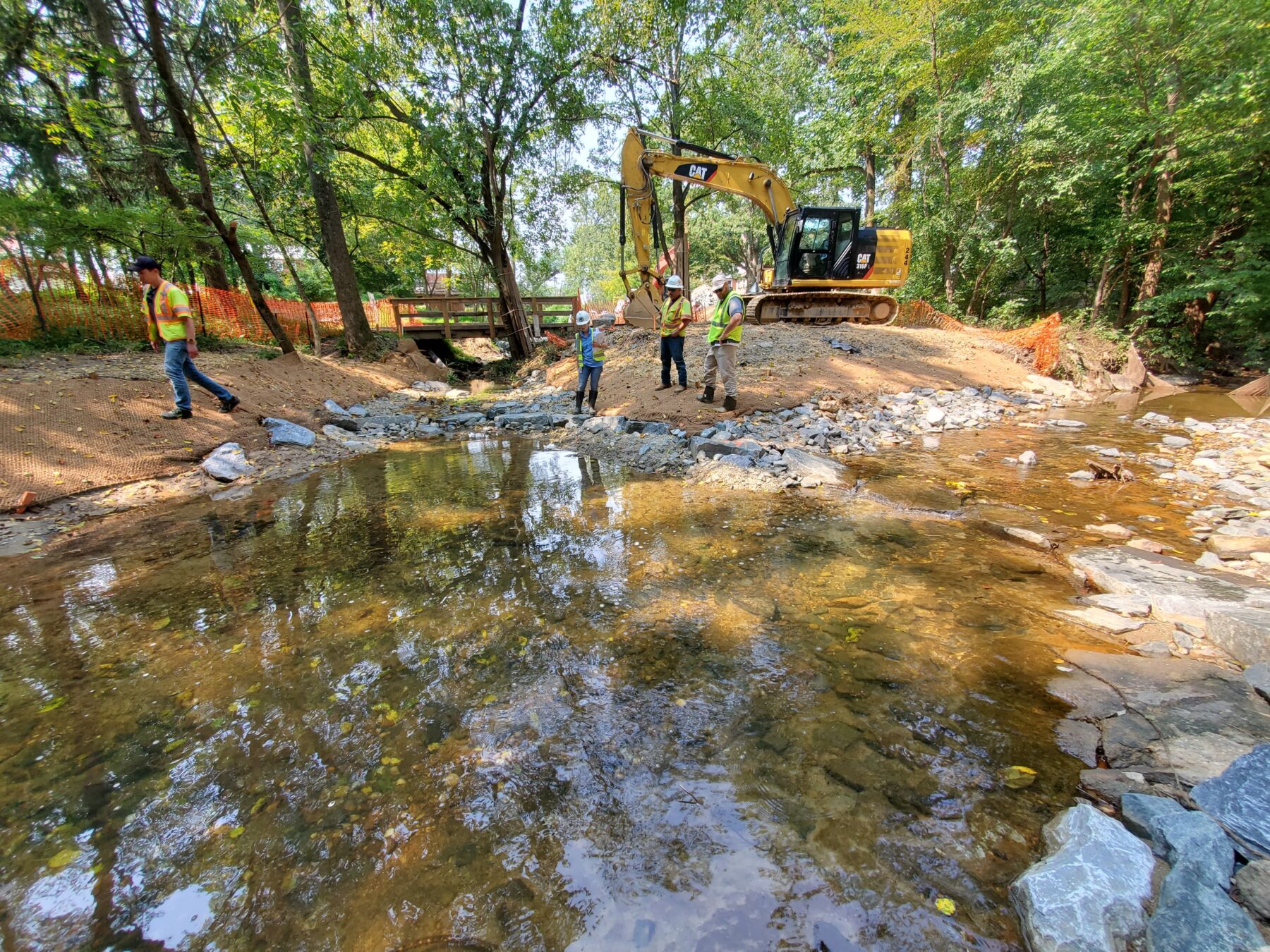Sewer and Water Lines in Parks

The Washington Suburban Sanitary Commission (WSSC) is the owner of the majority of the miles and miles of water and sewer lines traversing the earth beneath us in Montgomery County. While this critical infrastructure removes wastewater from our homes and businesses and brings us treated water for drinking, cooking, and bathing, it is aging. As such, its contents can become sources of pollution.
With much of WSSC’s water mains being at least 50 years old, breaks in the pipes are both unavoidable and unpredictable. When a water line breaks, chlorinated water gushes from the pipe, picking up sediment that then enters storm drains, creeks, wetlands, and ponds. The sediment shows up in water bodies as orange or brown plumes.
What should you do if you suspect a sewer or water main break?

If you see water bubbling from the ground (usually near a sidewalk, street, or building), it might be a water main break. If you smell an out-of-place foul odor or observe greywater being discharged, it may be a sewer line leak. You can help by contacting WSSC to alert them of the issue. You can also contact staff at Montgomery Parks via the Pollution Incident Phone Line: (301) 495-3582 if you see a potential sewer leak or sediment-laden water running into storm drains or entering streams.
Sewer Repair, Replacement & Rehabilitation (SR3) Projects Scheduled Throughout the Parks
Urban streams are highly susceptible to sewage pollution due to their proximity to sewer lines. As sewage systems flow using gravity, sewer mains were historically installed at the lowest points in the landscape beside streams or rivers.
WSSC works throughout Montgomery County to perform sewer repairs and maintenance to address aging sewer infrastructure and protect existing assets. They have developed a multi-year program called the Sewer Repair, Replacement, and Rehabilitation (SR3) Program. While the projects implemented within this program may cause a minor inconvenience to park users while in progress, they will all improve the condition of the wastewater collection system assets as well as surface water quality.

The SR3 Program is the result of a Consent Decree entered into by WSSC, the United States Environmental Protection Agency (USEPA), the Maryland Department of the Environment (MDE), and four (4) local citizens’ groups. Under the leadership of the Pipeline Design Division of the Engineering and Construction Team, WSSC is working to repair and replace parts of the sewer system in order to restore pipe and manhole conditions. With these improvements, less groundwater will infiltrate into pipes through cracks. As a result, there will be fewer sewer overflows into our waterways, which will enhance the protection of both public health and the environment while improving service to WSSC’s customers. Repair work may include pipelining, pipe relocation, or pipe replacement; replacing manhole frames and covers; grouting manholes; or other types of repairs. Exposed sewer assets in streams are also being protected by restoring stream beds. The net effect of these changes will be improvements to water resources and updated infrastructure that will serve WSSC’s customers for many years to come.
Park Impacts
Most projects to improve the condition of WSSC sewer assets and water quality in our streams will be in the stream valley units and adjacent areas. Please use caution when using park trails and avoid designated work areas, as heavy vehicles and equipment may require the use of trails and park accessways to enter work sites.
Completed Projects
Installed new sewer pipes, manholes, and stream restoration.
Watts Branch Stream Valley Park
Repairs to a sewer manhole and stream restoration
Paint Branch Stream Valley Park
Paint Branch Trail
Installation of new sewer pipes and manholes and stream restoration.
Willard Avenue Neighborhood Park
Sewer lining project
Little Falls Stream Valley Park
Little Falls Trail
Sligo Creek Parkway at Piney Branch
Sewer repairs and removing an abandoned sewer pipe from Sligo Creek